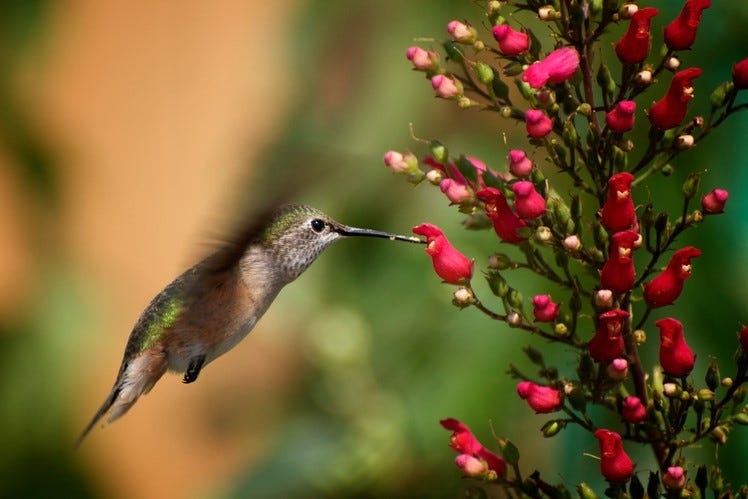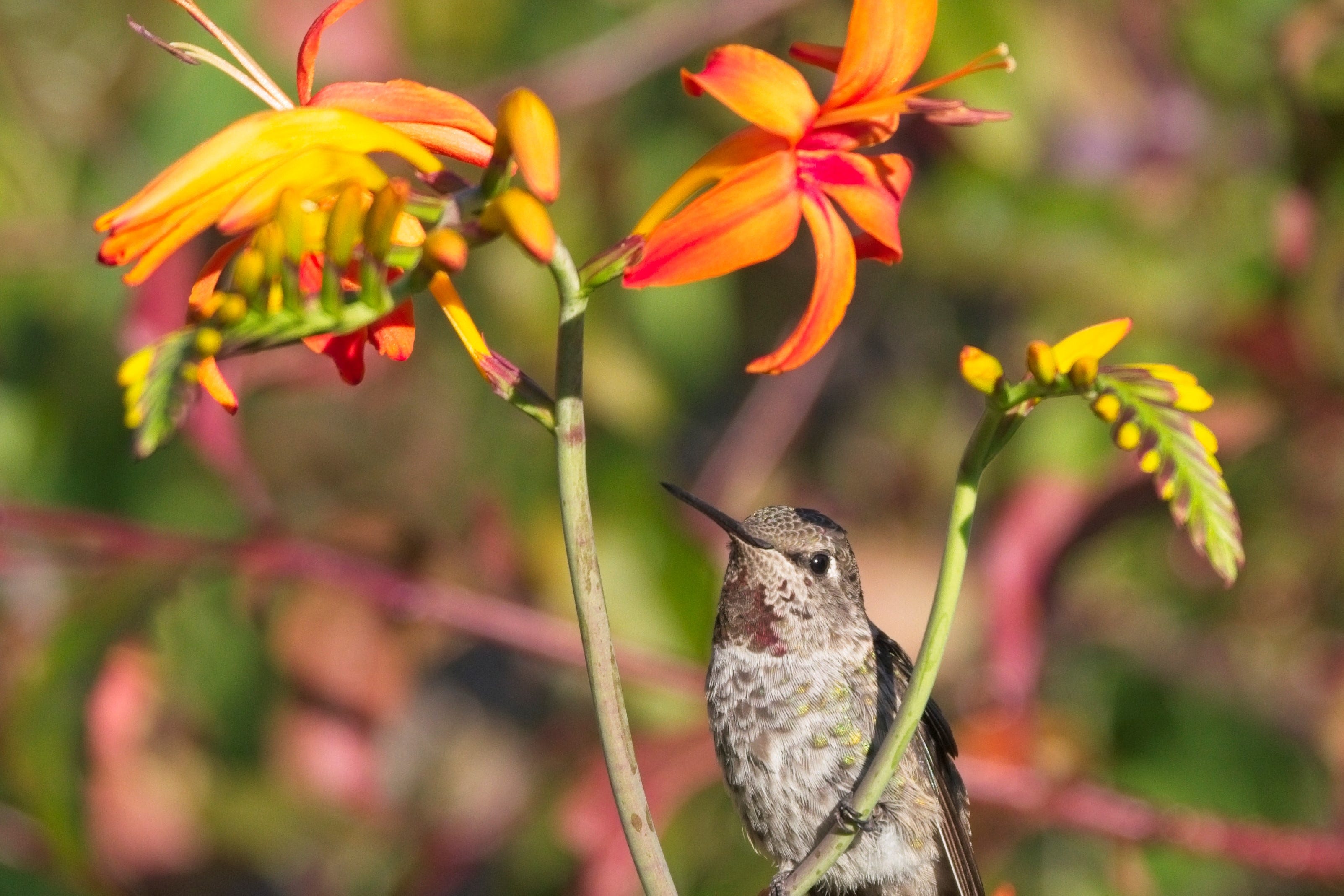Plants That Attract Hummingbirds: Make Your Yard A Hummingbird Magnet
The southwest is home to more hummingbirds than any other region of the US. Some hummingbirds are year-round residents in the American South and West, but there are about a dozen species that migrate to and from the warm winter climates of Mexico and Central America. These tiny pollinators travel thousands of miles – including long stretches over water – so they need plenty of energy reserves! To help them fuel up for their flight, plant generous groupings of plants with natural nectar.
Gardening to attract hummingbirds is easy to do. By providing water, shelter, and an assortment of colorful flowering plants, you will be rewarded with the company of these wonderful wild birds. You will also help ensure their future by replacing food and habitats that have been lost due to human activities like agriculture and urbanization.
Delight in seeing these winged jewels darting from flower to flower in search of their next sip of nectar. Jump to a section to learn more!
Growing Food For Hummingbirds
"As a result of their unique but inefficient means of flight, they must consume enormous amounts of food each day, with nectar often amounting to 100-200% of their body weight." - The Hummingbird Society
When it comes to feeding hummingbirds, natural nectar is best. "Natural nectar" refers to the nectar that comes from flowers. In the diet of a hummingbird, comparing natural nectar to the sugar water in hummingbird feeders is like comparing an organic fruit smoothie to a soda. While many non-gardeners use hummingbird feeders as nectar sources, we encourage gardeners to go with plants as much as possible. Plus, planting a garden brings added beauty to the landscape and an appreciation and understanding of how the natural world is interconnected.
Hummingbird favorites typically have long, tubular blossoms. The shape accommodates their long, slender beaks for a sip of nectar, and limits insect access to the nectar inside. Hummingbirds seek flowers by sight, rather than scent, and they are most often attracted to vivid colors including red, pink, orange, yellow, blue/purple.
Hummingbirds do not live on nectar alone: they also need protein! Hummingbirds eat tiny insects and spiders to balance out their diet. The added benefit of planting a hummingbird garden is that in addition to nectar, plants also provide habitat for the insects required to feed hummingbirds.
Planting a variety of plants with different blooming times will help to keep hummingbirds happy all season. Our top recommendations for hummingbird favorites with abundant natural nectar are listed below.
Hummingbird Favorite Plants For Spring And Summer
It's important to include these earlier-blooming perennials for late spring and early summer color, to provide nectar for the earliest migrating hummingbirds returning to your garden.
- Arp Rosemary (Rosmarinus officinalis Arp)
- Beardtongue (Penstemon)
- Columbine (Aquilegia)
- Coral Bells (Heuchera)
- Lonicera (Honeysuckle)
Hummingbird Favorites For Mid-Summer Through Fall
The presence of these later bloomers will ensure an abundance of hummingbirds at the height of their southward migration. To attract hummingbirds from mid-summer through the fall, plant the following suggestions:
- Agastache (Hummingbird Mint)
- Texas Red Yucca (Hesperaloe)
- Redbirds in a Tree (Scrophularia Macrantha)
- Hummingbird Mint (Agastache)
- Bee Balm (Monarda)
- Sage (Salvia)
- Hummingbird Trumpet (Zauschneria)
Looking for further inspiration? See David Salman's Hummingbird Garden Plant List.
Offer Fresh Water For Hummingbirds
- Provide moving water, such as a small fountain or a source of dripping or spraying water. Hummingbirds prefer moving water, such as water sources that drip or spray, not a birdbath with standing water.
- A fountain with multiple tiers that drip, or a very low volume mist nozzle attached to a branch or tree trunk is ideal.
- Remember to locate the mist nozzle or fountain in the open, situated away from hiding spots where cats can hide and ambush the birds.
Create Shelter For Hummingbirds
- Hummingbirds love a bare branch devoid of foliage on which to sit, so remember not to be too quick to clean up dead branches on the tops of shrubs or lower branches of trees.
- Conifers, shade trees and taller shrubs, will provide a sheltered perch where the hummingbirds can rest, build nests and safely survey their garden domain.
- Placing small handfuls of clothes drier lint in the branches will provide material for the "hummers" to build their nests.
Wildflowers & Flower Bulbs For Hummingbirds
- When planning your hummingbird garden, don't forget to consider wildflowers and spring-planted bulbs!
- Planting wildflowers from seed can be a good option for filling containers, new garden beds, and meadows with abundant nectar-rich blooms. Favorites include Zinnias, Cleome, Mexican Sunflowers, and our hummingbird-friendly mixes. Shop Wildflowers For Hummingbirds.
- Spring-planted flower bulbs are a good complement to perennials - since they grow to full size in their first season, they can attract hummingbirds while perennials grow to their mature size. Favorites include Crocosmia, Gladiolus, Callas, and Cannas. Shop Spring-Planted Bulbs for Hummingbirds.











